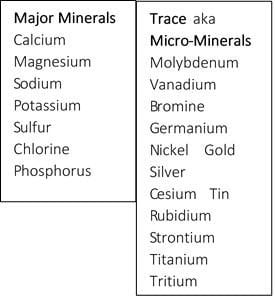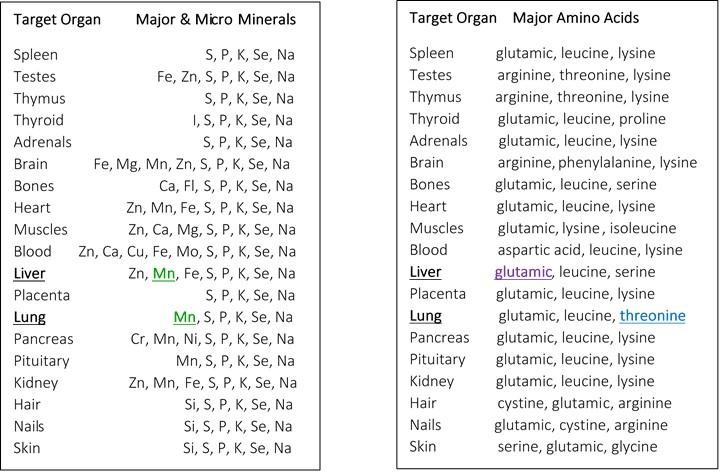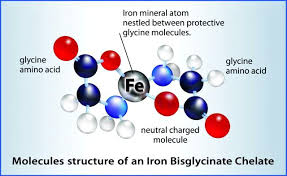Gaining a better understanding of chelated minerals and how they work in the body will help you promote health and prevent disease in your animal patients.
The physical world is formed of mineral elements, and life is dependent upon a relatively small number of chemical elements. Of the 92 known stable elements, the most important minerals for life include the macro minerals and others are known as trace minerals or micro minerals.
In the animal body, blood levels of minerals are constantly held to critical measures. When the levels slightly change, the animal may appear ill.
The way to heal many diseases and live in health is managing minerals.
Chelated Amino Acid Minerals (CAAM)
Animals are designed to eat chelated minerals that naturally exist in plants and animal tissue. They also have the ability through digestion to create chelated minerals, but at a lower level that will not entirely feed the animal.

How are chelated amino acids minerals (CAAM) naturally created in plants and during digestion?
The term chelation comes from the Greek word chele, which means claw, and it functions like a crab’s pincer that takes a hold of food. A chelator is a molecule of a mineral that has been bonded together with organic matter, such as an amino acid (AA). Plants create CAAM with their roots buried in soils; they absorb tiny minerals and then chelate amino acids, helping the plant to grow. In animals during digestion, HCl in the stomach breaks down proteins into amino acids that then, by chance, come in contact with a mineral. The +/- attraction causes the molecule to become chelated. Animals that eat other animals’ tissue consume CAAM from the prey.
The intestinal mucus allows minerals that weigh less than 1500 daltons to easily be absorbed. All CAAM molecules are the correct size for the intestines.
Also, when a mineral becomes chelated, it becomes magnetically neutral, and this prevents the CAAM from connecting to an organic salt and being discharged in feces.
Today, it is important to supplement the diet with CAAM. Depending upon geography, some farm soils do not contain certain minerals, industrial farming has depleted minerals in soil, pet food manufacturing has reduced minerals by cooking, and animals with GI problems cannot absorb and assimilate minerals well. The lack of minerals in pet food gives rise to many diseases and behavior problems.
Research in human nutrition since the 1980s of testing CAAM with radioactive isotopes has identified that CAAM are directed to where they are needed; they are ‘tagged’ or ‘targeted’ to organs and systems.

The above charts are examples of minerals and amino acids from research in nutritional and functional medicine in people. Animals will have their own unique needs according to species. When combined, minerals and amino acids create CAAM for a target organ to be healed or to maintain health.
In functional medicine work with people, liver health can be supported by selecting a mineral such as manganese and chelating this with an amino acid, such as glutamic acid. Lung support might involve chelating manganese with threonine.
 The quality standard for buying amino acid chelated minerals is from worldwide companies backed by patented technology and proven science. It is necessary that they also remove waste resulting from the chelating process, leaving the chelates pure. The pure chelated mineral is bio-available and can target the appropriate organs or system.
The quality standard for buying amino acid chelated minerals is from worldwide companies backed by patented technology and proven science. It is necessary that they also remove waste resulting from the chelating process, leaving the chelates pure. The pure chelated mineral is bio-available and can target the appropriate organs or system.
Dynamite is a company that utilizes chelated amino acid minerals, allowing healing from the inside-out.
Reference
Harvey, Steven N. Minerals: Right On Target, Studies in the Use of Pure Amino Acid Chelated Mineral Supplements, Based on the Research by Dr. Harvey Ashmead.
Nature’s Field (1987).
[pro_ad_display_adzone id=”31848″]







